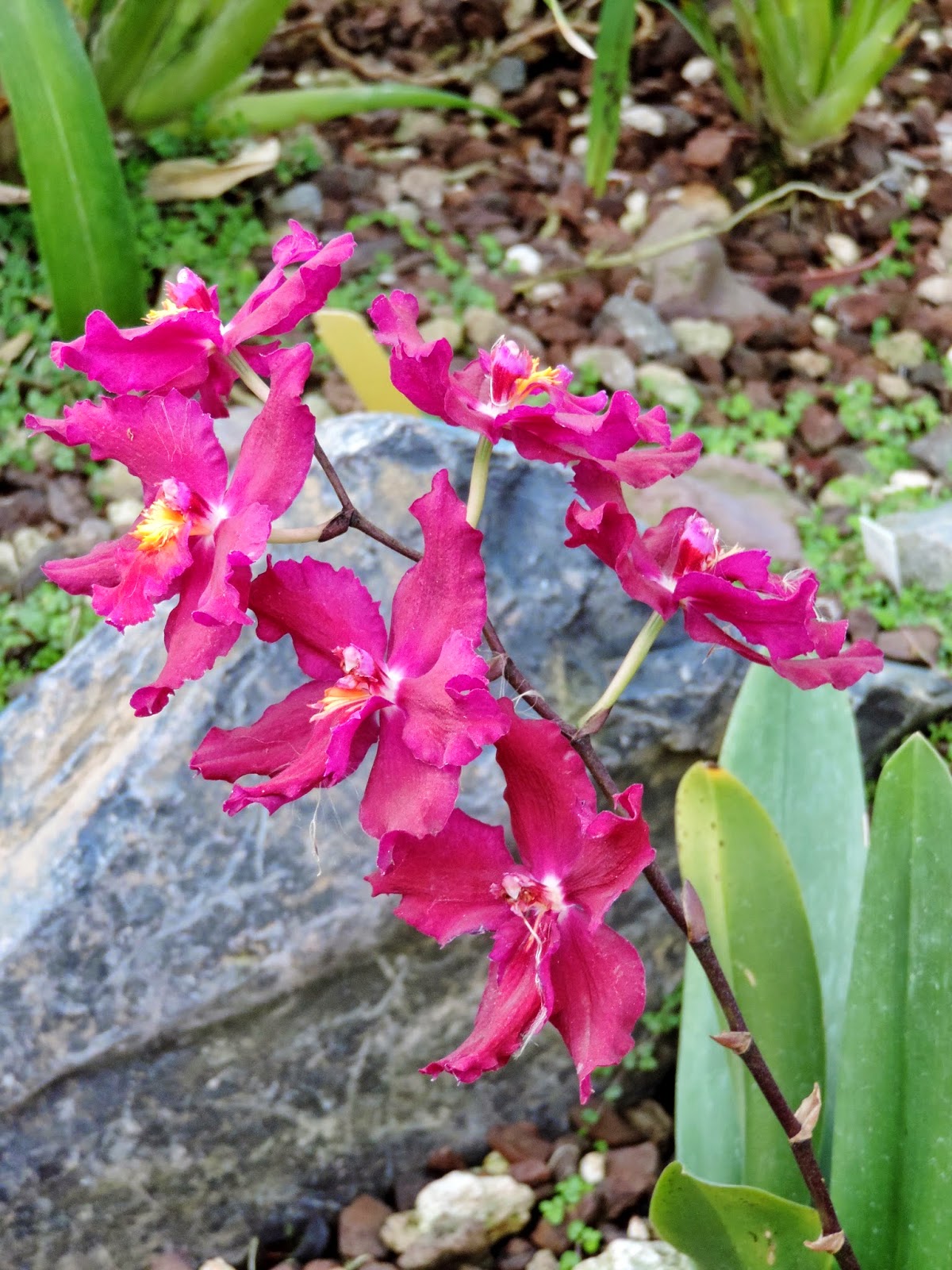Here are my two granddaughters and son, Michael. Romy (on the monkey bars) is 5-years old. She can go back-and-forth on the monkey bars a number of times on her own. She's been amazing on playground equipment for years. Malin (right below Romy) is 3-years old. She's not too far behind Romy is her athletic playground skills.
Malin can't quite do the monkey bars on her own, but she's in the process of learning with dad's help.
And here's Romy slipping down the slide and enjoying every second of it.
If you have kids, you know how different they can be from each other. Both came from the same place, raised by the same parents in mostly the same way BUT so very different. The picture below is a great example of how different they are. Malin probably already has her ice cream in hand and just grabbed whatever. Romy, on the other hand, is precariously positioned on the side of the portable ice cream cart trying to figure out just what ice cream she really wants today, reviewing them one at a time!Within Parque La Carolina is a very large water lake with boats you can rent. It was a beautiful day and the park was packed. So much stuff going on everywhere including individual performers displaying their talents for all to see, admire and possibly pad their pockets and food vendors galore. You could experience it all at Parque La Carolina!
Located in the southern sector of Parque La Carolina, north of the city, sits Quito Botanical Garden. Ecuador is one of the countries with the greatest plant diversity per area of the planet; this is because this small country has classified 17,000 plants (more species than the entire European continent). That means in Ecuador you can find around 50,000 species of plants! That's why Quito Botanical Garden makes every effort to preserve as many Ecuadorian species as possible.
The Botanical Garden has an area of 195,903 square feet. It offers different areas where the flora is divided into diverse climatic zones that the Ecuadorian highlands have, in addition to the permanent exhibits of plans with specific characteristics, and warmer region plants which are found in the greenhouses.
These climatic zones are: the wetlands, the Cloud Forest and Moorland. There is a greenhouse where there are several plants of the Amazon region; there are themed gardens which exhibit roses, lilies of the valley, bromeliads, palms, important plants for their characteristics and use.
Here are my darling granddaughters posing in front of the koi pond. Romy is on the left and Malin is on the right.
Grandpa, Grammy and the two darling granddaughters.
This is a huge painted wall in the Botanic Gardens ... a perfect photo opportunity for two darling granddaughters!
Two darling granddaughters hammin' it up for Grammy!
The exhibit that is their highlight of the Botanic garden is the orchid exhibit. With 4,250 classified orchid species, Ecuador is considered a country of orchids. Quito Botanical has the largest orchid collection on public display in South America. I didn't get names for any of them so what you're going to experience next is just a series of MANY orchid photos. They are amazing, beautiful, and well worth the visual tour. Surely a delight to the eyes.
Michael and the darling granddaughters in the orchid exhibit.
A beautiful bromeliad.
Did you ever think so many different varieties and colors of orchids even existed? God is one amazingly creative designer! But wait, there's more!!!
Another special attraction is the exhibit of carnivorous plants. They not only feed on insects, as most people think, but they can also trap and digest small amphibians, fish, worms and rodents. A space called the health in different cultural contexts, especially in the Amazonian tribes.
Outside the exhibits were these two really interesting looking cacti plants.
Father and son ... see any resemblance?
This is my lovely daughter-in-law, Erica, and the two darling granddaughters again. Erica is pregnant with granddaughter #3 and is due late April. I'm not sure I'll be able to keep up with three granddaughters ... two was a handful and I was often exhausted from playing. Now I know why God designed younger women to have kids and not older ones ... we just wouldn't make it I'm afraid!
More flora in the garden.
Here's this flower getting ready to bloom.
And here's what it looks like fully opened up blooming. Cool, huh?
And these cool metal insects hanging around the trees.
Isaiah 40:6b-8
All flesh is grass, and all its loveliness is like the flower of the field. The grass withers, the flower fades, when the breath of the LORD blows upon it; surely the people are grass. The grass withers, the flower fades, but the word of our God stands forever.
All flesh is grass, and all its loveliness is like the flower of the field. The grass withers, the flower fades, when the breath of the LORD blows upon it; surely the people are grass. The grass withers, the flower fades, but the word of our God stands forever.














































No comments:
Post a Comment